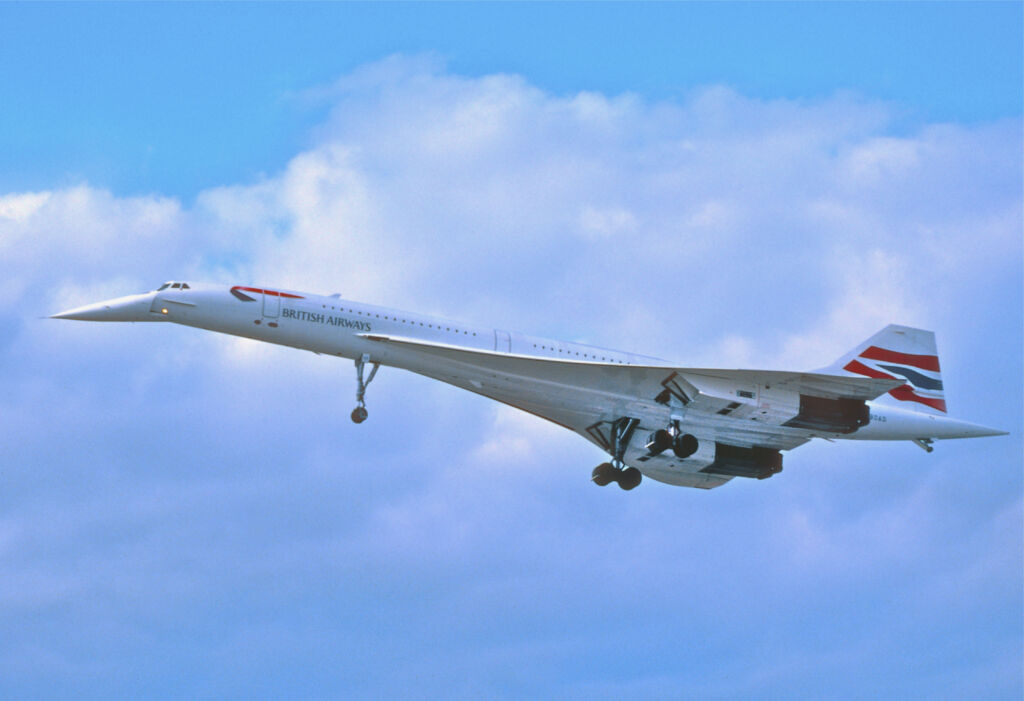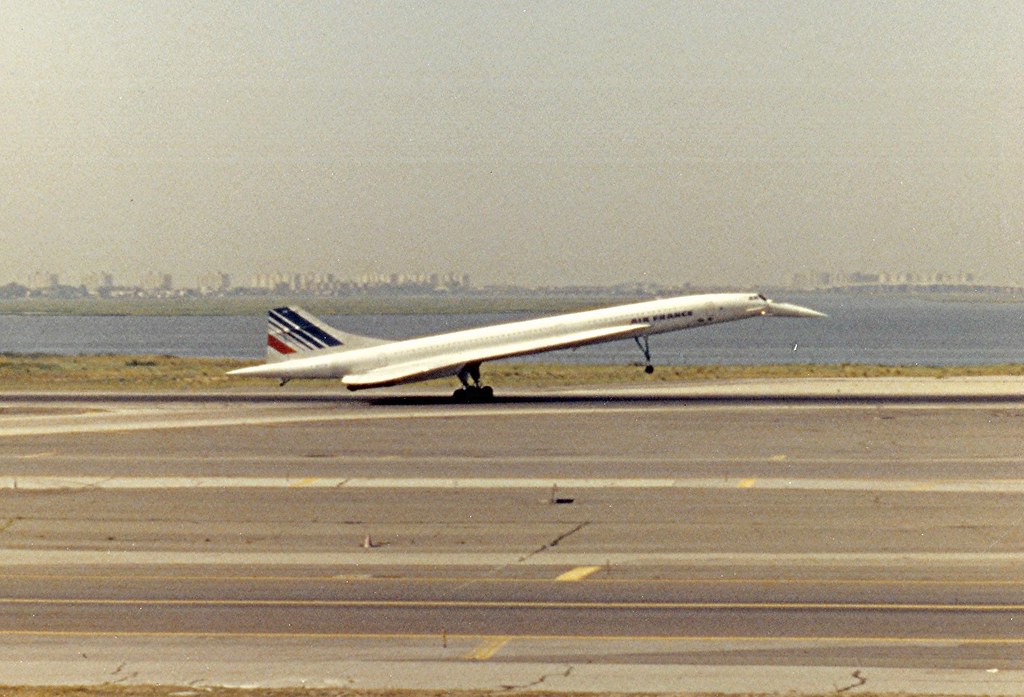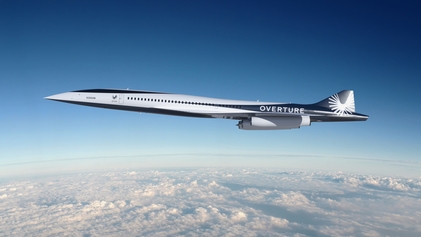The Concorde, a retired supersonic airliner, was one of the first aircrafts to use immensely powerful pure jet engines for a commercial purpose. As an aircraft ahead of its time, the Concorde quickly became the most iconic airliner in commercial flight history. In this blog post, we will discuss the engineering behind the Concorde, the end of its operations, and its new potential successor.
What Was the Concorde?
Collaboration
The Concorde represents an agreement between the aircraft industries of the United Kingdom and France to collaboratively complete the project. It is often referred to as the “Great Collaboration”. The two nations first agreed on the project in the 1950s. Initial designs were discussed in 1954 and the first flight of the Concorde was in 1969. The sole goal of the project was to launch a safe supersonic commercial aircraft. One which would provide supersonic travel between London and New York City in only three hours. The Concorde was to be a symbol of luxury travel, offering exquisite service and shorter travel times.
The Engineering
The Concorde was built by four companies in the UK and France: British Aerospace, Rolls-Royce, Aérospatiale, and SNECMA (Société Nationale d’Étude et de Construction de Moteurs d’Aviation). Following seven years of testing and over three-hundred design modifications, the Concorde was finally completed. The aircraft was powered by four Concorde Olympus 593 MK.610 Engines, the most efficient jet engine in the world at Mach 2 speed. The four engines were manufactured by Rolls-Royce, and each produced approximately 38,050 pounds of thrust at takeoff. The Concorde had a top speed of Mach 2.04, or 1,354 mph, and had an overall range of about 3,900 nautical miles. Considering this range and the amount of fuel aboard the aircraft, the Concorde had a ratio of about 17 miles to the gallon per passenger. For more info on the Concorde’s wing specifications, takeoff requirements, and general data, visit the technical specs page here.
Commercial Flights
A standard commercial flight on the Concorde typically carried 2 pilots, 1 flight engineer, and 92-102 passengers. Arguably the most famous flight of the Concorde was its regular route from New York City to London in under three hours. Although, this was not the only regular route. Air France flew the Concorde as a flagship (first class) flight from Paris to NYC, and the first regular route ever flown was from London to Bahrain in 1976. The aircraft was originally banned from United States airspace by congress due to concerns about the sonic boom it created. This restriction was later lifted, allowing the Concorde to first land at Washington Dulles International Airport three times weekly. It was not until 1977 that the Concorde began its regular flights into and out of JFK International Airport, as pictured below.
Other destinations run by British Airways included direct flights to Miami, Dallas, Bahrain, Barbados, and an indirect flight through Bahrain to Singapore.
The service aboard this aircraft was unlike any other of its time. While aboard, passengers were provided with a multi-course meal and lavish drinks served by the cabin stewardesses. The Concorde’s tagline, “Arrive Before You Leave”, maintained the aircraft’s prestige of being the only available commercial method of supersonic travel. A one of a kind experience that, unfortunately, cost over $12,000 a ticket. The Concorde, although a symbol of luxury, was not only used by A-listers and world-renowned figures. It became a valuable tool for high-end individuals conducting business abroad.
The Concorde’s Retirement
The Concord Crash
After decades of successful flight for the Concorde, the beginning of its end came in July of 2000. A Concorde aircraft flying from Paris to New York crashed almost immediately after takeoff. Killing all 109 people on board and an additional 4 on the ground. It was the first crash of a Concorde in its almost 25-year span of commercial services. A great tragedy that accelerated the termination of all Concorde operations in 2003. Following a government investigation, analysts found that the aircraft ran over a strip of metal on the runway. This resulted in the loss of one of the tires. A piece of rubber from the tire struck a fuel tank underneath the wing, almost immediately causing a fire and failure of one of the left-side engines. Unable to climb higher, the second left engine failed, causing the aircraft to crash only two minutes after takeoff.
Both British Airways and Air France ceased operations immediately after the crash, but they resumed Concorde flights in 2001. Another suspected contributing reason to the end of Concorde travel was the attacks on the World Trade Center in September 2001. Confidence in aircraft travel was at an all-time low during this period. This encouraged British Airways and Air France to officially cease Concorde operations only two years after.
The “New Concorde”
Boom Supersonic
Boom Technology, a Colorado-based company founded in 2014, is at the forefront of reviving supersonic commercial travel. Inspiration for the project is taken from the Concorde, history’s only successor in this area. Boom Supersonic aims to have its aircraft completed and passengers in the air by 2029, acting as the only supersonic airliner in use. The company has already signed agreements with several airlines, and United became the first U.S. airline to sign a purchase agreement in 2021. Despite their project being titled the “New Concord” by the public, Boom plans to bring innovation that the supersonic commercial sector has never seen before with their Overture jet.
The Overture Jet (Concorde 2.0)
The Overture jet, pictured below, will be Boom Supersonic’s primary aircraft in their plans to revive supersonic commercial travel. It will travel at Mach 1.7 (slightly slower than the Concorde at Mach 2.0) and carry 65 to 80 passengers. The Overture will be powered by a new turbo-fan propulsion system, called the Symphony engine. The engines are developed by three partner companies: Florida Turbine Technologies, GE Additive, and StandardAero. A standard flight in the jet will have a cruising altitude of 60,000 feet, and it has a range of about 4,250 nautical miles. Additionally, the gull-type wings reduce engine stress and supersonic noise, a former complaint of the original Concorde jet. For more information on the Overture jet, visit Boom Supersonic’s website here.
Did you enjoy this article? Share your thoughts in the comments section below.
This blog post was sponsored by DataRay - World Leading Experts in Laser Beam Profiling



